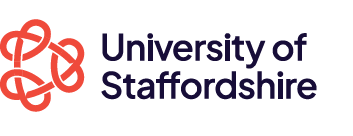Module Descriptors

ORTHOPAEDIC PRACTICE
NURS60672
Key Facts
Health, Education, Policing and Sciences
Level 6
30 credits
Contact
Leader: Katharine Melvin
Hours of Study
Scheduled Learning and Teaching Activities: 36
Independent Study Hours: 264
Total Learning Hours: 300
Assessment
- Coursework - Case Study (3000 words) weighted at 100%
- Clinical Practice Assessment weighted at 0%
Module Details
Texts
Bowen, G., McNally,M., Thomas, S., Gibson, A. (eds) (2010) Oxford Handbook of Orthopaedics and Trauma Oxford OUP
Clarke, S.., Santy-Tomlinson, J. (2014) Orthopaedic and Trauma Nursing- An evidence-based approach to musculo-skeletal care Chichester Wiley Blackwell
Solomon, L., Warwick, D., Nayagam, S. (2014) Apley and Solomonís Concise System of Orthopaedics and Trauma 4th ed Boco Ratan, CRC Press
Wilmott, H. (2016) Trauma and Orthopaedics at a Glance Chichesster Wiley Blackwell
Clarke, S.., Santy-Tomlinson, J. (2014) Orthopaedic and Trauma Nursing- An evidence-based approach to musculo-skeletal care Chichester Wiley Blackwell
Solomon, L., Warwick, D., Nayagam, S. (2014) Apley and Solomonís Concise System of Orthopaedics and Trauma 4th ed Boco Ratan, CRC Press
Wilmott, H. (2016) Trauma and Orthopaedics at a Glance Chichesster Wiley Blackwell
Indicative Content
Anatomy and physiology of the musculo-skeletal system and associated pathophysiology
Introduction to the RCN orthopaedic and trauma practitioner competence framework
Principles of orthopaedic care
Orthopaedic conditions, their care and management
Orthopaedic trauma and its care and management
Pain assessment and management
Complications associated with orthopaedic condition
Splinting, casting and application of traction
Managing risk in an orthopaedic environment
Interprofessional working with orthopaedic patients
Introduction to the RCN orthopaedic and trauma practitioner competence framework
Principles of orthopaedic care
Orthopaedic conditions, their care and management
Orthopaedic trauma and its care and management
Pain assessment and management
Complications associated with orthopaedic condition
Splinting, casting and application of traction
Managing risk in an orthopaedic environment
Interprofessional working with orthopaedic patients
Learning Strategies
Scheduled Learning and Teaching Activities: (36 hours)
30hours Lectures / workshops
3 hours Seminars
3 hours Tutorials
Guided Independent Study: (264 hours)
42 hours assignment preparation
114 hours Clinical practice and clinical assessment preparation
108 hours Blackboard guided study/activities
30hours Lectures / workshops
3 hours Seminars
3 hours Tutorials
Guided Independent Study: (264 hours)
42 hours assignment preparation
114 hours Clinical practice and clinical assessment preparation
108 hours Blackboard guided study/activities
Module Assessment Details
The module assessment consists of two parts:
3000 word case study 100%
Assesses LO's 1,2 and 3
Clinical practice assessment PASS/REFER/FAIL
Assesses LO 4
Both elements of the assessment must be passed.
Formative Assessment / Feedback:
Student presentation of the pathophysiology of the patientís condition for the chosen case study peer and tutor feedback.
Tutorials, clinical practice supervisor feedback.
3000 word case study 100%
Assesses LO's 1,2 and 3
Clinical practice assessment PASS/REFER/FAIL
Assesses LO 4
Both elements of the assessment must be passed.
Formative Assessment / Feedback:
Student presentation of the pathophysiology of the patientís condition for the chosen case study peer and tutor feedback.
Tutorials, clinical practice supervisor feedback.
Special Admissions Requirements
Registered Healthcare Practitioner
Working in an orthopaedic or trauma environment
clinical practice supervisor who holds an Orthopaedic qualification.
Working in an orthopaedic or trauma environment
clinical practice supervisor who holds an Orthopaedic qualification.
Resources
Library
Blackboard
On line resources
Anatomical models/bones
Access to a named clinical practice and supervisor who has an Orthopaedic qualification
Blackboard
On line resources
Anatomical models/bones
Access to a named clinical practice and supervisor who has an Orthopaedic qualification
Learning Outcomes
1. DEMONSTRATE A SYSTEMATIC UNDERSTANDING AND DETAILED KNOWLEDGE OF THE ANATOMY, PHYSIOLOGY AND PATHOPHYSIOLOGY AND HOLISTIC CARE OF PATIENTS WITH MUSCULAR SKELETAL DISORDERS
(Knowledge and Understanding, application)
2. CRITICALLY EVALUATE THE PRINCIPLES THAT UNDERPIN SAFE AND EFFECTIVE ORTHOPAEDIC PRACTICE
(Analysis, Knowledge and Understanding, Problem-Solving)
3. CRITICALLY ANALYSE AND IMPLEMENT EVIDENCE-BASED PRACTICE TO ENHANCE QUALITY, HOLISTIC PATIENT CARE WITHIN AN INTERPROFESSIONAL WORKING ENVIRONMENT
(Enquiry, Application, Knowledge and Understanding)
4. DEMONSTRATE ACHIEVEMENT OF THE CORE COMPETENCIES FOR ORTHOPAEDIC AND TRAUMA PRACTITIONERS (Application, Reflection)
(Knowledge and Understanding, application)
2. CRITICALLY EVALUATE THE PRINCIPLES THAT UNDERPIN SAFE AND EFFECTIVE ORTHOPAEDIC PRACTICE
(Analysis, Knowledge and Understanding, Problem-Solving)
3. CRITICALLY ANALYSE AND IMPLEMENT EVIDENCE-BASED PRACTICE TO ENHANCE QUALITY, HOLISTIC PATIENT CARE WITHIN AN INTERPROFESSIONAL WORKING ENVIRONMENT
(Enquiry, Application, Knowledge and Understanding)
4. DEMONSTRATE ACHIEVEMENT OF THE CORE COMPETENCIES FOR ORTHOPAEDIC AND TRAUMA PRACTITIONERS (Application, Reflection)
Web Descriptor
This module has now been amalgamated with Professional Practice in the Acute Care of the Spinal Cord Injured Patient to become NURS60758 Orthopaedic and Spinal Injuries Practice. The module will enable to to develop knowledge and understanding of the anatomy and pathophysiology of the neuromusculo-skeletal system in relation to orthopaedic conditions and spinal cord injuries and the care requirements of these patients. You will develop clinical skills to meet the trauma and orthopaedic practitioner and spinal cord injuries competencies.